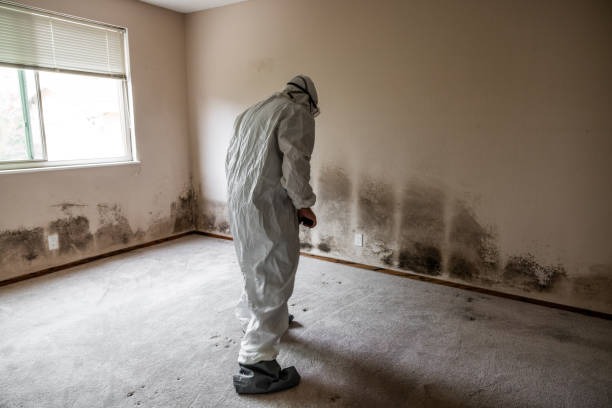We’ve all heard about mold and hazardous materials in damaged properties, but how many of us truly understand the risks they pose to our health and well-being? Understanding these risks is crucial whether you’re a homeowner, a tenant, or someone interested in property restoration. Let’s chat about what’s involved in dealing with these hidden dangers.
What Is Mold?
Mold is a type of fungus that grows in damp environments. It can appear as black, white, green, or various other colors, sometimes looking fuzzy or slimy. Mold thrives in places with high humidity and poor ventilation, such as bathrooms, basements, and even within walls.
Why Mold Is a Concern
Mold isn’t just unsightly; it can be a genuine health hazard. Mold spores are microscopic and can easily become airborne, entering our respiratory systems and causing a host of health issues. People with allergies, asthma, or weakened immune systems are especially vulnerable to mold exposure.
Health Risks Associated with Mold
-
Respiratory problems: Mold can cause coughing, wheezing, and shortness of breath.
-
Allergic reactions: Runny nose, sneezing, and skin rashes can occur.
-
Asthma flare-ups: Mold can trigger asthma attacks in susceptible individuals.
-
Long-term exposure: Chronic issues like respiratory illnesses and sinus infections may develop over time.
Spotting Mold in Your Home
Recognizing mold growth early is key to minimizing exposure and tackling the problem effectively. Here are some signs to look out for:
-
Visible spots on walls, ceilings, or tiles.
-
A musty odor that lingers in certain areas.
-
Water stains or discoloration around leaks or in humid areas.
-
Increased allergy symptoms when at home.
Steps for Addressing Mold Issues
Once you suspect mold, acting quickly is important to prevent further growth and health risks. Here’s a step-by-step approach:
-
Identify the source of moisture and fix any leaks.
-
Increase ventilation through fans or dehumidifiers.
-
Clean small mold patches with appropriate cleaning agents.
-
Consider professional help for larger infestations.
Understanding Hazardous Materials
Besides mold, damaged properties may have other hazardous materials like asbestos, lead, or certain chemicals. These materials can pose significant health risks if not handled properly.
Common Hazardous Materials in Properties
-
Asbestos: Once used in building materials, it can cause lung disease.
-
Lead: Found in old paint, particularly harmful to young children.
-
Chemicals: Chemicals from household products or industrial waste can introduce risks.
Health Risks from Hazardous Materials
Exposure to hazardous materials can lead to serious health issues, including:
-
Respiratory illnesses from asbestos and chemicals.
-
Neurological issues from lead exposure.
-
Cancer risks from prolonged exposure to certain substances.
Managing Hazardous Materials
Handling hazardous materials requires a careful, informed approach. Here’s how you can manage these risks:
-
Identify: Know what materials are present in your property.
-
Evaluate: Determine the level of risk based on material condition and exposure potential.
-
Remediate: Involve professionals for safe removal or containment.
If you’re dealing with mold or other hazardous materials, consider seeking out hazardous waste disposal services to ensure safe handling and compliance with local regulations. Proper disposal is crucial to preventing environmental contamination.
Preventive Measures
Preventing mold and hazardous material infestations begins with regular maintenance and awareness. Here’s how you can stay ahead of these issues:
-
Keep your home dry and well-ventilated to deter mold growth.
-
Inspect older properties for asbestos, lead, and other hazardous materials.
-
Regularly clean and repair areas are prone to moisture and wear.
Professional Help and Resources
If you’re feeling overwhelmed by mold or hazardous materials, it’s smart to consult with experts. Companies specializing in these areas can offer valuable insight and resources. For example, a professional Calgary restoration company can provide specific guidance and services tailored to your needs.
Insurance and Financial Considerations
Understanding Your Coverage
When dealing with mold and hazardous materials, it’s important to review your insurance policy to understand what’s covered. Home insurance may cover mold remediation if it results from a peril covered under the policy, like water damage from a burst pipe.
Cost Implications
Mold remediation and hazardous material removal can be costly. Getting multiple quotes from professional services will help you budget effectively. Also, check if financial aid or grants are available in your area for property restoration.
Educating Yourself and Others
Stay Informed
Keeping yourself informed about the latest guidelines and safety standards for mold and hazardous materials can empower you to manage these issues more effectively. Look for resources from reputable organizations like the Environmental Protection Agency (EPA).
Community Engagement
Engaging with local community groups or online forums dedicated to property health and safety, as well as sharing experiences and tips, can be beneficial. Participating in local workshops or seminars can also enhance your knowledge and preparedness.
For those living in specific areas, like Calgary, accessing local expertise is pivotal. You might consider reaching out to a company focused on mold removal in Calgary. They’ll have the expertise and equipment needed to deal with such problems efficiently.
Final Thoughts
Living on a property with mold or other hazardous materials isn’t just an inconvenience; it’s a serious health concern. By understanding the risks, recognizing the signs, and knowing how to tackle the problem, you can ensure a safer and healthier living environment. Whether you’re dealing with the issue yourself or calling in the pros, taking action is the first step toward peace of mind.
